Sightseeing cruise Budapest
From: 12,0 €
🎁 If you would like to give the purchased ticket as a gift, click here.
Our prices change based on demand, as well as the time of day and day of the week.
Welcome aboard the Budapest sightseeing cruise!
Welcome aboard the Sightseeing Cruise Budapest, the perfect way to discover the beauty and history of Budapest from the Danube River. Our 60-minute tour departs from Batthyány Square, giving you a unique perspective of the city’s stunning architecture and landmarks from the water.
As you embark on this journey, you’ll be greeted by our friendly and knowledgeable tour guides, who will share fascinating facts and stories about Budapest’s rich history and culture. You’ll pass by some of the city’s most iconic landmarks, such as the Hungarian Parliament Building, Buda Castle, Fisherman’s Bastion, and Matthias Church.
One of the highlights of the Sightseeing Cruise Budapest is the opportunity to see the stunning Chain Bridge from the water, which connects Buda and Pest, the two sides of the city. As you sail under the bridge, you’ll be mesmerized by the beautiful views of the city’s skyline.
We believe that the best way to experience Budapest is from the water, and we invite you to join us on the Sightseeing Cruise Budapest to see why.
Book your tour with PurpleLiner today and discover the magic of Budapest from a whole new perspective.

Audio Guide Details
Languages Available:
- English
- German
- Hungarian
- Italian
- French
- Spanish
- Slovak
- Russian
- Korean
Important Information:
- Free downloadable mobile application.
- Please bring your own earphones (no loudspeakers).
- Audio commentary is presented on your device.
- Please arrive with a fully charged device.
-
 Cancel up to 24 hours in advance for a full refund
Cancel up to 24 hours in advance for a full refund
-
 No Wheelchair access
No Wheelchair access
-
 Dogs are not permitted, except for service animals
Dogs are not permitted, except for service animals
-
 Dear Passengers! To ensure the safety of our guests, please be aware that in case of hazardous weather circumstances, unforeseen events or technical issues the company reserves the right to cancel cruises. A minimum number of participants is required to embark on our cruise. Thank you for your understanding!
Dear Passengers! To ensure the safety of our guests, please be aware that in case of hazardous weather circumstances, unforeseen events or technical issues the company reserves the right to cancel cruises. A minimum number of participants is required to embark on our cruise. Thank you for your understanding!
-
 Please note that alcoholic beverages and cocktails are served only to guests aged 18 and over.
We kindly ask that you do not bring your own food or drinks on board, as full service is available throughout the cruise.
Thank you for your understanding and cooperation.
Please note that alcoholic beverages and cocktails are served only to guests aged 18 and over.
We kindly ask that you do not bring your own food or drinks on board, as full service is available throughout the cruise.
Thank you for your understanding and cooperation.
Schedule & Prices
| Schedule | ||
|---|---|---|
| Departure | End of tour | |
| 17:00 | 18:00 | |
| 18:20 | 19:20 | |
| 19:40 | 20:40 | |
| 21:00 | 22:00 | |
| Departure place: |
|---|
| Dock 1/B |
| 1011 Budapest Batthyány square |
| GPS coordinates: 47.50585,19.039657 |

Sights featured on our Budapest sightseeing cruise
Budapest, often referred to as the “Paris of the East,” is a city of immense beauty and historical significance. Situated on the banks of the majestic Danube River, the capital of Hungary is renowned for its rich cultural heritage, stunning architecture, and a plethora of landmarks that tell the story of its past. The Danube River, flowing gracefully through the heart of the city, serves as a natural divider between the two halves of Budapest: Buda and Pest. In this essay, we will embark on a journey along the Danube in Budapest, exploring the remarkable landmarks that adorn its shores.
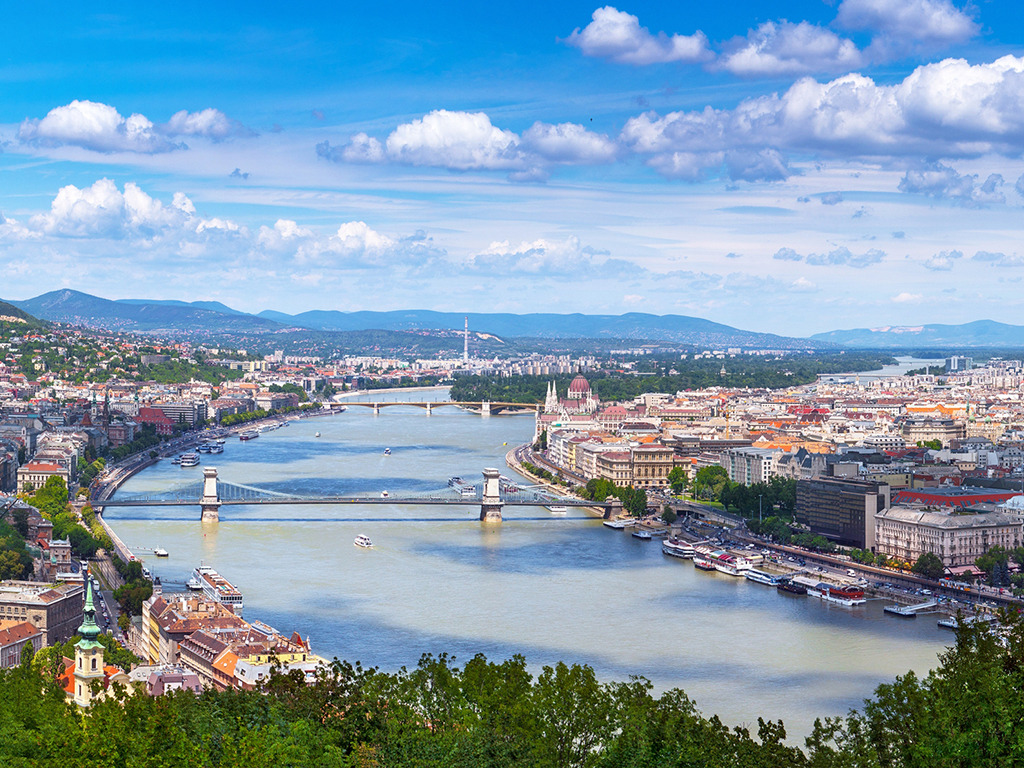
The Danube River: A Lifeline of Budapest
Before delving into specific landmarks, it is essential to understand the central role that the Danube River plays in the life of Budapest. As one of Europe’s longest and most iconic rivers, the Danube has been a vital trade route, a source of inspiration for countless artists, and a witness to centuries of history.
Buda Castle (Budavári Palota)
Continuing our journey on the Buda side of the river, we arrive at the Buda Castle, a UNESCO World Heritage site and one of Budapest’s most prominent landmarks. Perched atop Castle Hill, this magnificent palace complex has a history dating back to the 13th century. Over the centuries, it has served as a royal residence, a military fortress, and a symbol of Hungarian power and culture.
The Buda Castle boasts an impressive fusion of architectural styles, including Baroque, Gothic, and Renaissance elements. The sweeping courtyards, ornate façades, and meticulously landscaped gardens make it a testament to Hungary’s rich heritage. Today, the castle houses several museums, including the Hungarian National Gallery and the Budapest History Museum, which provide insight into the nation’s art and history.
As you explore Buda Castle, you’ll also encounter the majestic Matthias Church (Mátyás-templom), a stunning example of Gothic architecture. Its colorful tiled roof and intricate interior make it a must-visit for art and history enthusiasts. Adjacent to the church stands the Fisherman’s Bastion (Halászbástya), a fairytale-like terrace offering panoramic views of the Danube and the Pest side of the city.
The Turul Bird Statue at Buda Castle: The Turul is a mythical bird in Hungarian folklore, and a statue of this bird can be found at Buda Castle. It’s said to be guarding the city and is a symbol of strength and protection.
The Matthias Church (Mátyás-templom) and the Fisherman’s Bastilon
The history of Matthias Church can be traced back to the 13th century when the original structure was built. Over the centuries, the church has undergone multiple renovations and transformations, each contributing to its unique blend of architectural styles. Its current neo-Gothic appearance, characterized by its soaring spires and intricate stone carvings, is the result of a 19th-century restoration led by architect Frigyes Schulek.
One of the most striking features of Matthias Church is its vibrant and ornate tiled roof. The colorful Zsolnay ceramic tiles, adorned with intricate patterns and motifs, give the church a fairytale-like quality, earning it the nickname “The Church of Our Lady of Buda.” The tiles, featuring the Hungarian royal coat of arms and various religious symbols, create a stunning contrast against the backdrop of the blue Danube River and the cityscape of Pest.
Beyond its exterior beauty, the interior of Matthias Church is equally captivating. As one steps inside, they are greeted by a resplendent display of stained-glass windows, intricately carved altars, and a richly adorned nave. The Gothic rib vaults and elegant stone columns add to the sense of grandeur and spirituality that permeates the space.
One of the most famous aspects of Matthias Church is the colossal fresco adorning its southern wall, known as the “Sermon of St. Stephen.” This masterpiece by Hungarian painter Bertalan Székely depicts the first Hungarian king, St. Stephen, imparting his wisdom to his son, Prince Imre. The fresco serves not only as a work of art but also as a reminder of Hungary’s Christian heritage and its early kings.
The church’s pulpit, a remarkable piece of Renaissance art, is another highlight. Carved from white stone, it features intricate reliefs and is adorned with statues of saints. The pulpit’s craftsmanship and attention to detail reflect the artistic excellence of the era in which it was created.
Matthias Church has played a significant role in Hungary’s history. It was the site of numerous royal coronations and important events, making it a symbol of Hungarian sovereignty and national identity. Even today, it continues to be a cherished venue for weddings, concerts, and cultural events.
The church’s surroundings are equally captivating. Adjacent to Matthias Church stands the Fisherman’s Bastion (Halászbástya), a terrace offering panoramic views of the Danube, the Parliament Building, and the Pest side of the city. This fairy tale-like terrace, with its seven turreted towers and decorative parapets, adds to the overall charm of the Buda Castle District.
The Chain Bridge (Széchenyi Chain Bridge)
Our Budapest sightseeing cruise journey along the Danube begins with one of Budapest’s most iconic landmarks, the Chain Bridge. Opened in 1849, the Chain Bridge was the first permanent bridge to connect the separate cities of Buda and Pest, effectively unifying them into one metropolis. Designed by the Scottish engineer Adam Clark and financed by Count István Széchenyi, this suspension bridge was a marvel of its time.
The Chain Bridge is adorned with lion statues at each of its abutments, symbolizing strength and courage. It offers stunning panoramic views of both Buda and Pest, making it a popular spot for tourists and locals alike, especially at sunset when the city lights come to life. Strolling across the Chain Bridge is a quintessential Budapest experience, offering a glimpse into the city’s historical and architectural grandeur.
The “Zero Kilometre Stone” on Clark Ádám Square: This stone, located near Buda Castle, is considered the point from which all road distances in Hungary are measured. It’s also said that if you make a wish while touching the stone, it will come true.
Rudas Bath, one of Budapest’s historic thermal baths, exudes an aura of timeless tranquility. Nestled on the Buda side of the Danube River, this Turkish-style bathhouse dates back to the 16th century, during the Ottoman occupation of Hungary. The bath’s most distinctive feature is its octagonal main pool beneath a stunning Ottoman dome, where rays of sunlight stream through tiny windows, creating an enchanting atmosphere.
Rudas Bath offers a unique and traditional wellness experience with a range of thermal pools, including a variety of temperatures and mineral compositions. Visitors can indulge in the healing properties of the thermal waters, known for their therapeutic effects on aches and ailments. The bath also features modern spa amenities, such as saunas and an open-air rooftop pool, which grants panoramic views of Budapest and the Danube, making it a surreal setting for relaxation.
Elizabeth Bridge
The Elisabeth Bridge stands as a graceful and historic link connecting the Buda and Pest sides of Budapest. Named after Empress Elisabeth of Austria, it is one of the seven bridges that span the majestic Danube River. The bridge’s striking white color and Art Nouveau design make it a picturesque landmark within the cityscape.
Built in the early 20th century, Erzsébet Bridge boasts elegant ornamental details and sculptures, which add to its charm. The bridge was heavily damaged during World War II but was later reconstructed to preserve its original splendor. It is now a testament to Budapest’s resilience and architectural heritage.
Gellért Hill (Gellért-hegy)
Leaving the Buda Castle behind, we venture to Gellért Hill, a prominent natural landmark on the Buda side of the Danube. Named after Saint Gellért, a martyr who played a pivotal role in the conversion of Hungary to Christianity, the hill is a popular destination for both locals and tourists.
The highlight of Gellért Hill is the Liberty Statue (Szabadság-szobor), erected in 1947 to commemorate the liberation of Hungary from Nazi occupation. This imposing monument stands atop the hill and offers breathtaking panoramic views of Budapest. The iconic statue, a woman holding a palm leaf, symbolizes freedom and victory.
Another notable feature of Gellért Hill is the Gellért Thermal Bath (Gellért Fürdő), a historic spa complex known for its Art Nouveau architecture and thermal waters. Visitors can relax in the soothing thermal pools while admiring the intricate mosaic decorations and stained-glass windows.
Budapest University of Technology and Economics (BME)
The main building of this university, often referred to as the “University Church,” is a stunning example of Neo-Baroque architecture and can be seen from the Danube.
The Whale (Bálna)
A modern, glass-structured building on the Pest side, resembling the shape of a whale. It houses a shopping mall, cultural spaces, and restaurants, making it a trendy place to visit.
The Great Market Hall (Nagyvásárcsarnok)
Our Budapest sightseeing cruise now takes us to the Great Market Hall, also known as the Central Market Hall. Located at the southern end of Liberty Bridge on the Pest side, this bustling marketplace is a vibrant showcase of Hungarian culinary traditions and craftsmanship.
The Great Market Hall is a magnificent building with its ornate iron structure and colorful roof tiles. Inside, visitors can explore a wide array of stalls selling fresh produce, meats, cheeses, pastries, and traditional Hungarian dishes. It’s the perfect place to savor local flavors, pick up souvenirs, or simply immerse yourself in the lively atmosphere of a traditional European market.
Fővám Square (Fővám tér)
Located near the Great Market Hall, this square is known for its vibrant atmosphere, outdoor cafes, and cultural events that often take place there.
Danube Promenade (Duna-korzó) A picturesque pedestrian promenade along the Pest side of the Danube, offering scenic views of Buda Castle, the Hungarian Parliament Building, and the Chain Bridge. It’s an excellent spot for a leisurely stroll.
Vigadó Concert Hall (Vigadó) Situated near the Hungarian Parliament Building, this neoclassical concert hall hosts a variety of musical performances, cultural events, and exhibitions.
Shoes on the Danube Bank (Cipők a Duna-parton)
While many of Budapest’s landmarks celebrate its grandeur and historical significance, the Shoes on the Danube Bank memorial serves as a somber reminder of the city’s tragic past. Located along the Pest side of the Danube, this poignant memorial pays tribute to the countless Jewish victims who were shot and thrown into the river by Arrow Cross militiamen during World War II.
The memorial consists of a series of iron shoes sculpted in the style of the 1940s. These shoes, representing the victims, are scattered along the riverbank, and they serve as a powerful symbol of remembrance and reflection. The Shoes on the Danube Bank memorial is a moving testament to the importance of preserving the memory of those who suffered during the darkest times in history.
The Parliament Building (Országház)
Crossing the Danube once more, we arrive on the Pest side of Budapest and encounter one of the most impressive landmarks in the city—the Hungarian Parliament Building. Located on the banks of the river, this neo-Gothic masterpiece is often considered one of the most beautiful parliamentary buildings in the world.
Construction of the Parliament Building began in 1885 and took 17 years to complete. Its design, inspired by the British House of Parliament, features a symmetrical façade adorned with countless statues, spires, and intricate details. The central dome, which reaches a height of 96 meters (315 feet), is particularly striking.
The interior of the Parliament Building is equally magnificent, with lavishly decorated chambers, grand staircases, and an extensive collection of artworks and historical artifacts. The Hungarian Crown Jewels, including the Holy Crown, scepter, and orb, are also on display here.
A particularly captivating aspect of the Parliament Building is its nightly illumination. As darkness falls, the entire structure is bathed in a soft golden glow, creating a truly enchanting sight along the banks of the Danube.
Margaret Island (Margit-sziget)
As we continue our Budapest sightseeing cruise up the Danube, we come to Margaret Island, a tranquil oasis in the heart of Budapest. Named after Saint Margaret of Hungary, this 2.5-kilometer-long (1.5-mile) island is a popular recreational area for both locals and tourists.
Margaret Island offers a wide range of attractions, including beautifully landscaped gardens, jogging paths, sports facilities, and even a small zoo. One of its most iconic features is the Margaret Island Water Tower, a neo-Romanesque structure that once served as a water storage facility but now houses an exhibition on Budapest’s history.
The island provides a serene escape from the hustle and bustle of the city, making it a perfect spot for a leisurely stroll, a picnic, or a relaxing afternoon by the Danube.
Margaret Bridge
Margaret Bridge, also known as Margit híd in Hungarian, is one of Budapest’s most iconic and historic bridges. Connecting the Buda and Pest sides of the city, it spans the Danube River and is named after Saint Margaret of Hungary, who lived on Margaret Island, the picturesque island that the bridge leads to.
A short guide to the sights near the Danube
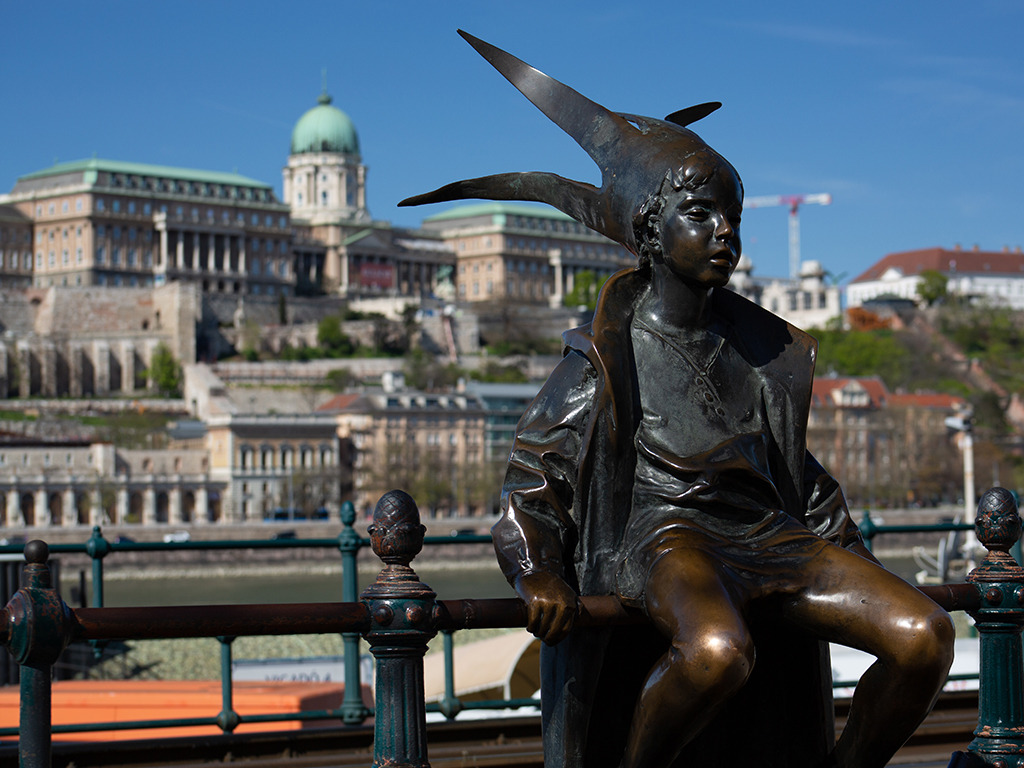
In the following entries we would like to give you information on a few things. Interesting facs, recommendations and mini guides to some of the sights close to our dock or the river itself. We hope to help you plan your day more efficiently by reading our articles.
First and foremost, we want to clear that the city of Budapest consists of two distinctive parts, divided by the river. Whether it is urban fun you are after, or rather you want to retreat from the hustle and bustle of the city life Budapest will surely got you covered.
Pest: The Pulsating Heart
Pest, located on the eastern bank of the Danube, represents the vibrant and dynamic side of Budapest. This is where the city’s commercial, political, and cultural life thrives. Here, you’ll find bustling boulevards, grand squares, and a lively cosmopolitan atmosphere, complete with numerous bars and restaurants.
Buda: The Tranquil Retreat
On the opposite bank, Buda offers a more tranquil and historic setting, characterized by its hilly terrain and picturesque vistas. Buda is where you’ll discover the city’s rich history, medieval charm, and natural beauty. If you would like to hike near the city, the Buda side offers a lot of variety.
So many thermal baths in the city…
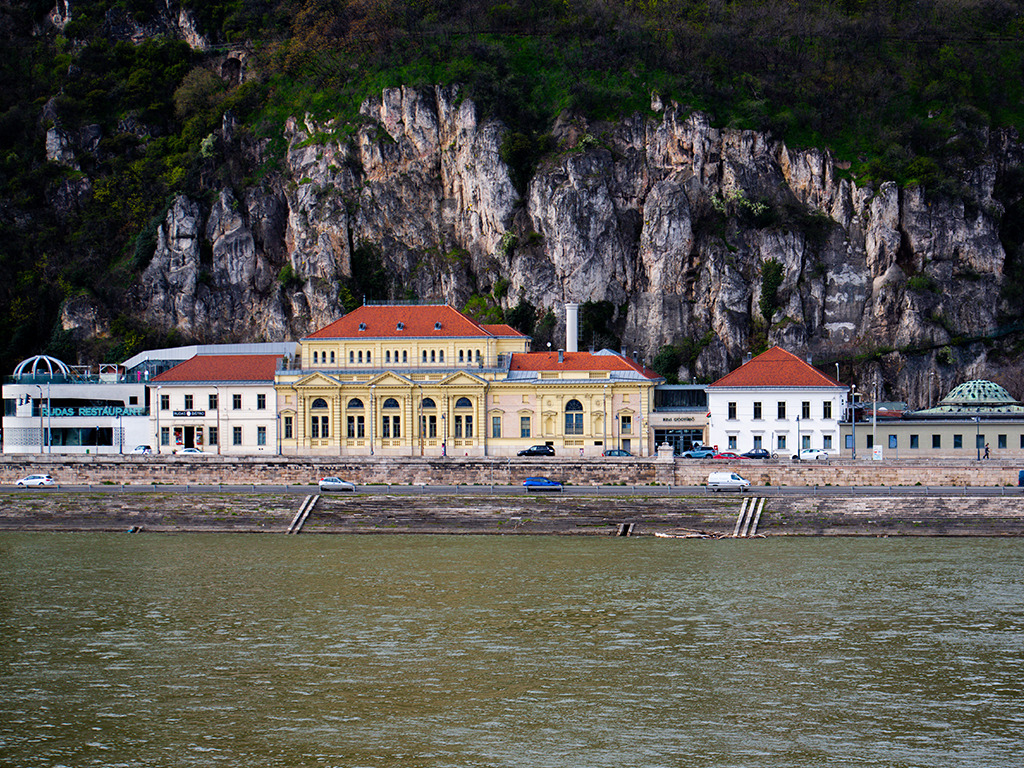
When you visit Budapest, bathing in one of the thermal spas is an absolute must try experience! In this entry we would like to provide you a detailed list of all the spas in downtown Budapest.
These thermal baths in Budapest are more than just relaxing attractions; they are also centers of well-being, offering a connection to Hungary’s rich thermal water heritage. Each bath’s water composition, temperature, and unique architectural features provide visitors with an opportunity to immerse themselves in centuries-old traditions of health and relaxation. Whether it’s the Széchenyi, Gellért, or Rudas, each bath is a testament to the enduring appeal of Budapest’s thermal culture, making a visit to these iconic establishments an essential part of any trip to the city.
Széchenyi Thermal Bath
One of the most famous and well-known thermal baths in Budapest, Széchenyi is an architectural gem that showcases Neo-Baroque style. What truly sets it apart is its enormous outdoor thermal pool, which is the largest in Europe. The thermal water in Széchenyi contains a unique combination of minerals, including calcium, magnesium, and hydro-carbonate, which are believed to have numerous therapeutic properties. The water emerges from natural springs deep beneath the city at a temperature of around 74°C (165°F), but it’s cooled to a more comfortable 38°C (100°F) for bathing. In addition, the Széchenyi spa can boast with a unique programme called the Sparty. Visitors can enjoy a relaxing soak in the outdoor pool, even in the wintertime, surrounded by stunning architecture accompanied by live music or modern electronic music. The Sparty is available only on the weekends.
Gellért Thermal Bath
Located within the iconic Gellért Hotel, the Gellért Thermal Bath is renowned for its Art Nouveau design and lavish decor. The thermal water here is sourced from the famous Gellért Hill springs, and it is rich in minerals such as calcium, magnesium, and sulfates. Bathing in thermal water is believed to have a soothing and healing effect on various ailments, particularly joint and muscle pain. The water temperature in the various pools at Gellért typically ranges from 35°C to 40°C (95°F to 104°F), making it a haven for relaxation and rejuvenation.
Rudas Thermal Bath
Rudas Thermal Bath is distinctive for its historical and architectural significance, with its core structure dating back to the 16th century during the Ottoman period. What sets Rudas apart is its special octagonal pool beneath a stunning dome with colored glass windows, allowing sunlight to filter through. The thermal water here is high in calcium, magnesium, and hydrogen carbonate, with temperatures ranging from 16°C to 42°C (61°F to 108°F). The varying temperatures in the different pools cater to a range of preferences, from invigorating cold baths to soothing hot baths, providing visitors with a unique and therapeutic experience.
Dandár Thermal Bath
Relatively newer than the previous entries, tucked away in a tranquil corner of Budapest, stands the Dandár Thermal Bath. The thermal water at Dandár contains a blend of minerals, including calcium, magnesium, and sulphates, known for their soothing and healing properties. The temperature of the water ranges from 21°C to 38°C (70°F to 100°F), making it an ideal place to relax and rejuvenate.The architecture and design evoke a sense of history and a tranquil oasis for visitors to escape the bustling city and immerse themselves in the restorative properties of the thermal water.
Veli Bej Türbe
Nestled in the Buda side of Budapest, Veli Bej Thermal Bath is a hidden gem that has been beautifully restored to its former Ottoman glory. Originally built in the 16th century, this bath has a rich history and is known for its unique water composition. The thermal water here is rich in minerals like calcium, magnesium, and hydro-carbonate, which are believed to have a soothing and curative effect on various health conditions. The water’s temperature ranges from 29°C to 38°C (84°F to 100°F), providing a perfect environment for relaxation and therapeutic bathing.
Lukács Thermal Bath
The Lukács spa (bearing the name of St. Luke) is a well-regarded establishment that stands out for its special features, distinctive water composition, and therapeutic temperatures, making it a popular destination for wellness enthusiasts and those seeking a relaxing escape.
The bath itself boasts a mix of architectural styles, with some elements dating back to the 12th century, making it one of Budapest’s oldest and most iconic thermal baths.
The water temperature at Lukács varies between 24°C and 40°C (75°F and 104°F), ensuring a range of options for visitors to tailor their experience to their preferences. The cooler pools are invigorating, while the warmer pools provide deep relaxation.
Palatinus Strand – Swimming pools on the Margaret Island
Located on the Margaret Island (Margit-sziget) in the heart of the Danube River, Palatinus Thermal Bath is known for its stunning outdoor pools and lush green surroundings. The island itself is a serene escape from the bustling city, and the bath’s location adds a touch of nature to the experience. Palatinus is often referred to as the “water park of Budapest” due to its varied and spacious outdoor pools. Although it is mainly visited during the summertime, but recently it was extended with a covered thermal spa section as well, which can be visited all year around.
One of the most distinctive features of Palatinus is the abundance of outdoor swimming and recreational pools. The complex includes wave pools, children’s pools, adventure pools with waterfalls, whirlpools, and even a special pool for practicing water polo, and now the forementioned thermal pools complete with saunas and steam baths. The range of amenities ensures that visitors of all ages and interests can enjoy a day of relaxation and aquatic fun. Additionally, the bath’s location on Margaret Island provides a tranquil setting with plenty of green spaces for picnicking and leisurely walks.
Following the footsteps of Sisi
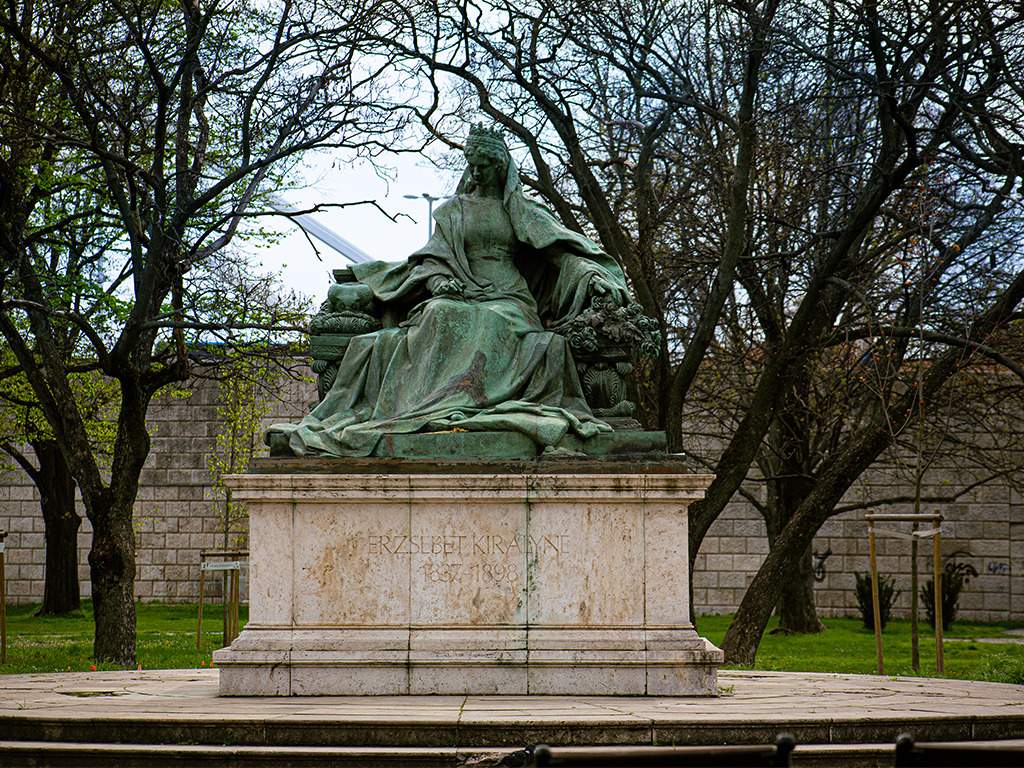
As we sail below the Elisabeth Bridge one might wonder, after whom this bridge was named after? You might have heard that Queen Elisabeth of Austria had strong connections with Hungary. Many of our public spaces and streets have been named after her, but also city districts, a section of the Grand Boulevard, and one of the downtown bridges are connected to her and her legend. This bridge is one of the many tributes to her and her deeds scattered around the city. Let us provide you with a list of few attractions related to Queen Elisabeth, or as the locals refer to her, Sissy.
Sisi, born as Elisabeth Amalie Eugenie von Wittelsbach on December 24, 1837, in Munich, Bavaria, was one of the most intriguing and beloved figures of the Habsburg monarchy. Renowned for her beauty, free-spirited nature, and deep connection with Hungary, she became an iconic queen and empress. Her story had intertwined with Hungary in numerous ways, and her legacy lives on through several sights in Budapest dedicated to her memory.
Sisi’s connection with Hungary began when she married Emperor Franz Joseph I of Austria in 1854, becoming Empress of Austria and Queen of Hungary. From the very beginning, Sisi embraced her new role with enthusiasm, taking a strong interest in Hungarian culture, language, and the country’s people. Her genuine affection for Hungary led her to learn the Hungarian language fluently, a rarity among the Habsburgs. She became an advocate for Hungarian causes, particularly the preservation of Hungarian culture and language.
The Hungarian State Opera House also carries the memory of Sisi. She was an avid supporter of the arts and attended numerous performances here. The grandeur of the opera house, with its ornate architecture, reflects the elegance that was synonymous with Sisi’s presence. As she was the one who convinced Emperor Franz Joseph to allow the Hungarians to have a grandiose Opera house of their own.
Erzsébet tér – Elisabeth square, located in the heart of Budapest, Hungary, is a bustling urban square with a rich history and vibrant atmosphere. As another tribute, this square was named after her as well. The square features a striking central garden adorned with beautiful flowerbeds and fountains, making it a popular spot for relaxation and leisurely strolls. This square marks the the very heart of the city. This where you will find the iconic Ferris wheel of Budapest.
The square’s central location, adjacent to Andrássy Avenue and the bustling Király Street, makes it a convenient starting point for exploring the city’s vibrant neighbourhoods, luxury shopping boutiques, and an array of dining options. Erzsébet tér is not only a picturesque place to unwind but also a dynamic gateway to Budapest’s captivating urban experiences.
Not so far from the Erzsébet tér, in front of the arch of the Madách square you may catch a glimpse of the statue of Sisi. Marking the beginning of the district VII. Also named after her, Erzsébet város- Elisabeth town. The bronze statue is 240 cm tall, weighs nearly 500 kg, and depicts Sisi in her thirties, with a book in her hand, symbolizing the queen’s poetic talent.
Although this recommendation is not in the city, for Sisi lovers this is an absolute must visit sight.
Not so far from Budapest the summer palace of Sisi can be visited at Gödöllő. The palace, originally built in the 18th century, gained fame during the Habsburg era when it became a favorite retreat for the imperial family, including Emperor Franz Joseph and Empress Sissy. It is renowned for its stunning Baroque architecture, beautiful gardens, and its connection to the chapters of Sisi’s life. Today, Gödöllő Palace is a popular tourist attraction, offering visitors a glimpse into the royal history and elegance of the Austro-Hungarian Empire.
The equal importance of Church and State
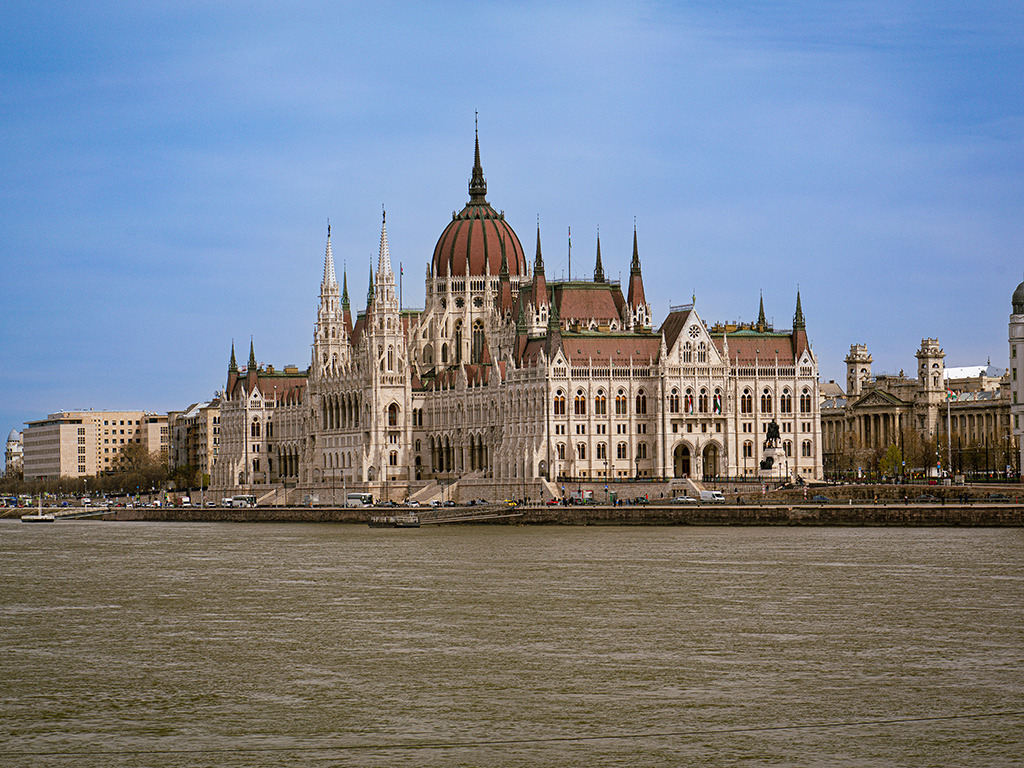
On the Pest side of the Danube stands the House of Parliament which we also sail past by on our cruise. Not far from it, close to the city centre, the St. Stephen’s Basilica, a masterpiece of Neo-Classical architecture is located. Completed in 1905, the basilica was named in honor of Hungary’s first king, Stephen, who played a pivotal role in the country’s conversion to Christianity. Like the Parliament, the basilica’s dome also reaches a height of 96 meters, a design choice believed to reflect the equality of church and state, a fundamental principle in Hungary. St. Stephen’s Basilica is not only a place of worship but also a cultural and artistic center, housing numerous concerts and exhibitions throughout the year.
The shared height of these two structures, both at 96 meters, is not merely a coincidence but rather a deliberate architectural choice that underscores the significance of both the spiritual and political dimensions in Hungary’s history. This equal height symbolizes the balance between church and state, emphasizing the country’s commitment to religious freedom, democracy, and the importance of its cultural heritage.
In addition to their height, both the Parliament and St. Stephen’s Basilica are striking examples of Budapest’s commitment to preserving its architectural and historical heritage. They serve as iconic landmarks, drawing visitors from around the world who are eager to witness the grandeur and history of these magnificent buildings.
The Hungarian Parliament Building and St. Stephen’s Basilica, standing tall and side by side near the banks of Danube, are more than just architectural wonders; they are powerful symbols of Hungary’s rich cultural and political legacy. Together, they represent the harmony between church and state and stand as a testament to the nation’s enduring commitment to its history, faith, and democracy.
Care to have a drink?
As you may know, Budapest has become party central over the past decade – a true place of pilgrimage for party lovers. After enjoying your Budapest evening cruise, we’d love to share a few recommendations on where to continue your night. Watch the sunset fade into the city’s vibrant nightlife from one of the many unique spots along the Danube!
A38 Ship
This converted Ukrainian stone-carrier ship on the Danube hosts a variety of events, including concerts, DJ sets, and cultural performances. It’s a unique location for live music and clubbing with a scenic riverside view. In the afternoon hours they invite people to warm up for the night with a cool lounge session. Either for a coffee or for more robust drinks we recommend checking out this former freighter.
A Bálna – The “Whale”
On our journey we will sail past this odd modern glass building, the “Whale”. This nickname was given by the locals, as the shape of the building resembles the sea creature. Regardless of its strange appearance the Whale offers a wide range of bars and restaurants. This truly unique spot in town has a truly cool vibe to it. Chill out and enjoy your drink while watching the hustle and bustle of the city from this quiet oasis right next to the river. Enjoy the mesmerizing sunset from a great position. Here is the list of bars which can be found within and what to look for: Esetleg, a great open-air terrace on the northernmost tip of the establishment, Rombusz bar in the middle and Bálna Terasz is in the southern part. Explore and choose which is the most appropriate for you!
Erzsébet tér – Elisabeth Square
As we detailed in the previous entry, this lovely square is the figurative and literal heart of the city. Which also means that you will find the liveliest bars and clubs in this area. If you want to spectate the hustle and bustle of the city life with a drink or two than be sure to hang around Elisabeth Square. Let us give a few recommendations within the square. Fröccs Terasz is probably the most iconic place to start. Named after the popular mix of wine and sparkling water, the establishment used to be the bus terminal for both domestic and international trips. Now offering a wide range of alcoholic drinks and other beverages Fröccs Terasz truly is a place to be.
Right beside Fröccs Terasz, in the middle of the square you will find Akvárium Klub. The most versatile club in Budapest in terms of music genre. The original plan for this site was a huge conference building, but the project ran out of funds before even the building could have started. Leaving a huge crater in the middle of Budapest. So, the “property” was sold giving birth to a club called Gödör, meaning hole. After a few years the establishment was renamed to Akvárium – aquarium, referreing to the glass floored pool which became the “roof” of the dance floor beneath. Before the party starts in the afternoon, the Akvárium offers a lounge atmosphere in the garden area, and massive parties in the evening inside. Backed with a wide selection of drinks, it is an ideal choice for those who seek a bit of chill in the middle of the city or for party seekers alike
Hungarian inventions
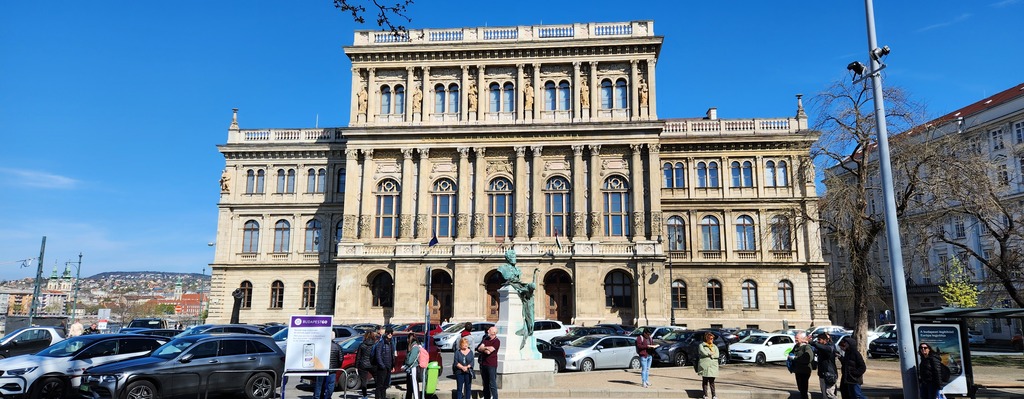
Did you know that many every day-use item was invented by a Hungarian? As we pass two of the most prestigious science universities during our cruise, it is well worth mentioning a few geniuses of Hungarian origins.
One of the most famous Hungarian inventors is Ignaz Semmelweis, a pioneering figure in the field of medicine. In the mid-19th century, Semmelweis made a groundbreaking discovery that revolutionized the practice of medicine and saved countless lives. He observed that the incidence of puerperal fever, a deadly infection affecting women after childbirth, was significantly reduced when doctors and medical students washed their hands with a chlorine solution before attending to patients. His findings laid the foundation for modern aseptic techniques and the importance of hand hygiene in healthcare, ultimately leading to a dramatic decrease in the spread of infectious diseases.
Hungary has also made significant contributions to the world of creativity. The Hungarian engineer and inventor, Ernő Rubik, created the Rubik’s Cube in 1974. This seemingly simple puzzle has challenged minds and entertained people of all ages around the globe. It not only became a global sensation but also stimulated interest in mathematics and problem-solving, influencing educational methods and inspiring numerous competitions, including speed cubing.
In the realm of transportation, another Hungarian innovation has had a lasting impact. János Csonka, together with Donát Bánki, developed the carburetor, a device that revolutionized internal combustion engines. The carburetor allowed for better fuel-to-air mixture control, leading to more efficient and powerful engines in automobiles and other motorized vehicles. This innovation played a crucial role in the advancement of transportation technology, making cars more reliable and fuel-efficient.
Furthermore, the ballpoint pen, an everyday writing tool that has found its way into the hands of millions, was invented by Hungarian-Argentinian journalist László Bíró in 1938. Bíró’s invention addressed the limitations of fountain pens and revolutionized the way we write and take notes, making writing more efficient and accessible.
One of the most famous Hungarian inventors is János Irinyi, who is credited with developing the noiseless and non-explosive match in 1836. Irinyi’s invention greatly improved safety and convenience, as it eliminated the risk of accidental explosions common with earlier matches. This innovation paved the way for modern match production and contributed to fire safety globally.
We hope that our article provided you with some valuable pieces of information and gave you a few spots where you can continue your exploration of the city.
Budapest, with its stunning landmarks along the Danube, is a city that seamlessly blends history, culture, and natural beauty. As we’ve explored in this article, the Danube River serves as a lifeline for the city, connecting its two distinct halves, Buda and Pest, and providing a backdrop for some of Europe’s most iconic landmarks.
From the grandeur of the Hungarian Parliament Building to the somber reflection at the Shoes on the Danube Bank memorial, from the tranquility of Margaret Island to the architectural wonders of the Buda Castle and St. Stephen’s Basilica, Budapest’s landmarks along the Danube offer a diverse and captivating array of experiences. Each site tells a unique story of Budapest’s past and present, making it a city that continues to enchant and inspire visitors from around the world. Whether you’re an art enthusiast, a history buff, or simply a traveler seeking new adventures, Budapest’s Danube landmarks have something extraordinary to offer.


